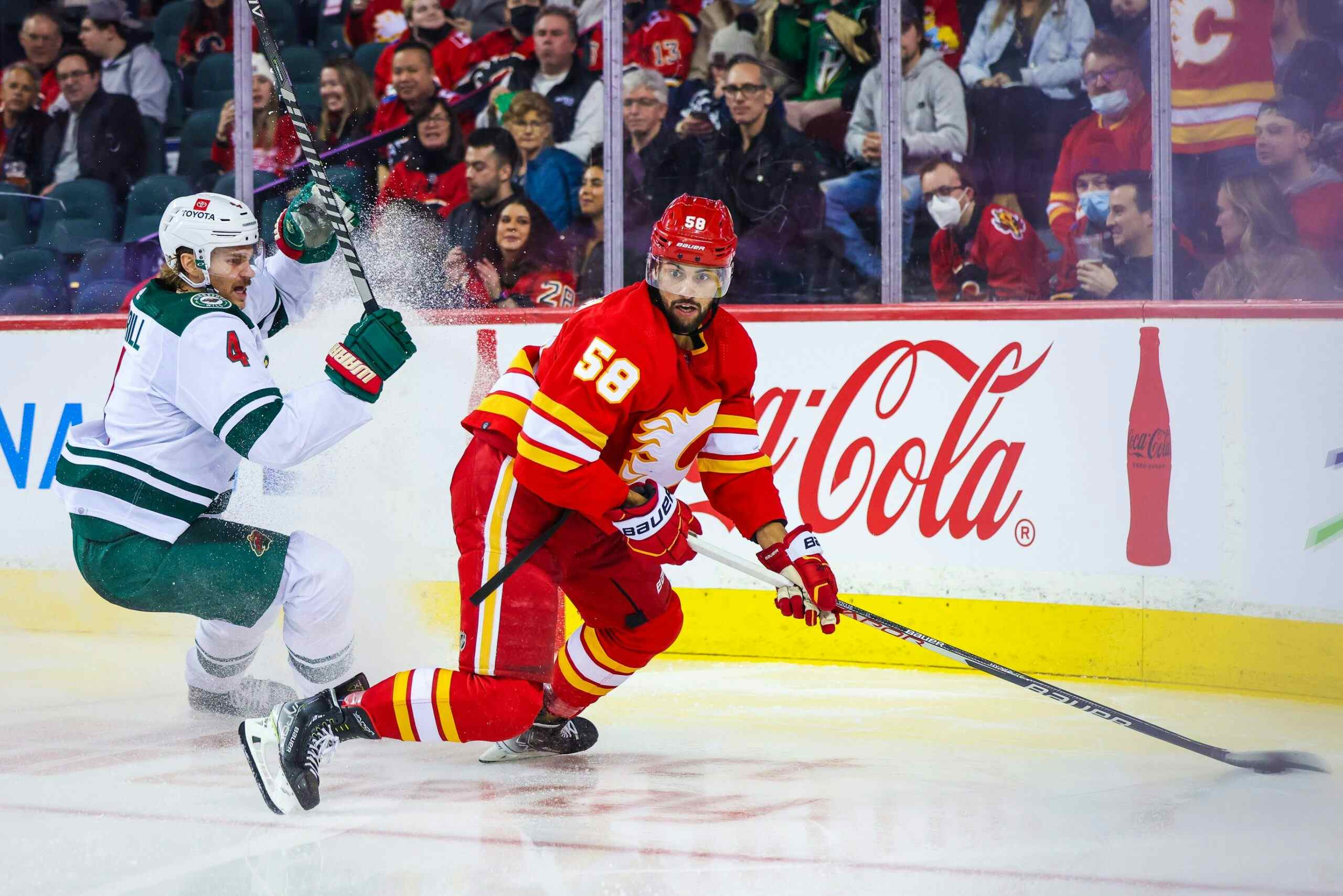Do the Flames Need Grit?
By Kent Wilson
11 years agoThe title has become a common refrain in some corners of Flames fandom recently. I can see where the perception is coming from – many of the new additions up front aren’t of the bump and grind variety (Cervenka, Hudler, Baertschi). Flames don’t have a true heavyweight on the 4th line either (though Jackman is game) and the blueline features maybe one guy you would expect to hit the opposition with extreme prejudice – and Sarich may not even play for every game.
So glancing at the roster, it’s obvious why so many folks are agitating for some sandpaper. Unfortunately, I doubt this is truly an issue of importance for the club as they are currently constructed, if only because they have far more pressing concerns.
The Quest for Truculence
When Brian Burke took over the Toronto Maple Leafs, he famously growled at reporters that the club needed more "truculence", ie; bigger, tougher players so the team would be "harder to play against". Burke has since added (and, in some cases, deleted) guys like Colton Orr, Dion Phaneuf, Mike Komisarek, David Steckel, Mike Brown, Colby Armstrong and Luke Schenn.
The focus on toughness didn’t make the Leafs any harder to play against when the pertinent measure is winning and losing games – last year they finished13th in the East (despite a red hot start from their big shooters) and were 26th in the league in terms shooting/possession metrics. They’re as far from competing as ever and many of the guys the team acquired to beef up the roster are now considered obvious errors to varying degrees (Orr, Komisarek, Armstrong, Schenn).
I wrote about this issue previously in the Asking the Right Questions series. To wit:
One area I think where the focus on player qualities over player outcomes can muddle things is in team building, specifically when it comes to player categorization, ie; "roles" on a club. For example, NHL teams primarily employ bigger, tougher players in their bottom six forward rotation, especially when it comes to the the 4th unit. This is often an area where folks stop asking pertinent questions (can this guy outplay his opponents? Does he drive goal differential?) are instead start focusing on particular qualities (is he big? Is he mean? Can he fight?)…
Again, this is not to say being big and tough is bad or that tough guys can’t be useful – instead, the issue is that being tough also doesn’t necessarily mean a player has any value. Being tough is merely a potential asset, a tool that has utility only insofar as it helps drive play, goals etc. If a guy is big and can hit but bleeds shots and goals against because he’s completely miserable at everything else, then he is a liability.
Meaning, the Flames should avoid looking for toughness as a stand-in for a player’s overall ability. Or, from another angle, adding toughness for the sake of toughness would either be useless or counter-productive for the Calgary Flames.
The Real Needs
The club’s primary issue is its ability to drive play against other team’s big guns. Calgary’s top-6 has been increasingly snowed under by other top-6 opposition over the last few years. Only excellent-to-elite additions up front are going to move the needle in a meaningful way for the Flames. There are guys who could do that who also count grit as one of their primary assets (David Backes, for instance) but the relevant factor is that the puck moves the right direction when they’re on the ice.
The Flames roster isn’t particularly blessed with overt toughness. Feaster and company need to avoid the conventional temptation to fill that apparent need in Burkian fashion, however, since toughness in and of itself is neither sufficient nor necessary to improve the club.
Like the Leafs in 2008, Calgary’s challenge now is to get better players – whether they are tougher or not is a matter of style more than content.
Recent articles from Kent Wilson





